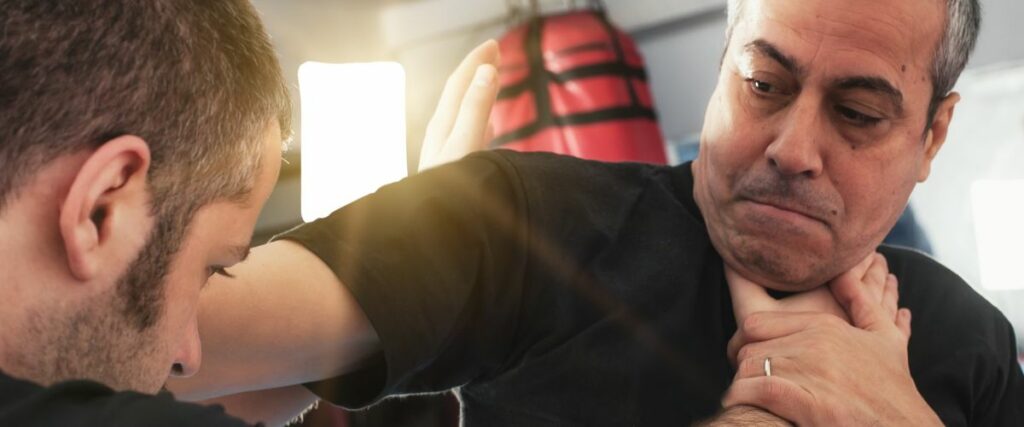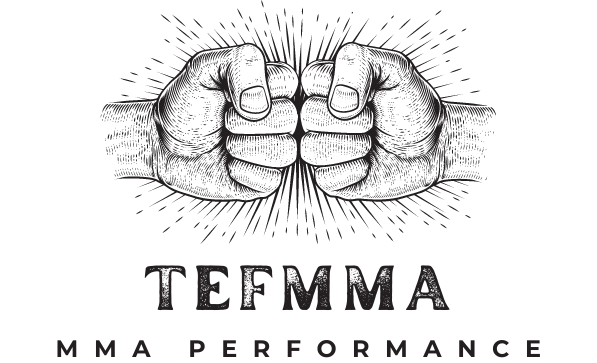Self-defense has always been an important skill to know. Even in the safest countries on the planet, I personally believe that any man should have at least some skills to defend himself, his family, and property from physical harm. With that said, there are many ways you can approach self-defense. One of those is MMA, but many people ask themselves if it’s any good.
ММА is excellent for self-defense because it involves striking, wrestling, and grappling. In addition, the sport’s competitive nature and training methods inevitably sharpen the body and mind and prepare them for actual fighting.
But this short answer is unlikely to be enough to convince you. So I will go into more detail on the matter and then share some valuable techniques for self-defense.
Is MMA Good For Self-Defense?
For a few reasons, MMA is perfect for self-defense. It teaches you how to fight; it develops physical and mental toughness, strength, agility, and endurance.
The term “self-defense” means using physical force to protect yourself from harm by another person. This can be both armed and unarmed. Combat sports like MMA don’t deal with armed combat but are invaluable in teaching you the unarmed part.
A reliable way to preserve your health is by running away from a potential altercation, so being in good shape is enough. This is sometimes a reasonable solution, but running is not an option if the threat is also to your loved ones or property.
In these cases, dealing with the attacker in the fastest and most effective way is key. MMA will teach you more tried and proven ways to incapacitate a person than any other martial art can.
Most traditional martial arts and contemporary self-defense styles fall short in a crucial aspect of training: their lack of real sparring.
They drill endless pre-set combinations and sequences that, in theory, should work. Still, you have slim chances of using them against a violent and forceful real-life opponent if you’ve never tried them against a fully resisting person.
And many of those “self-defense” techniques do not work and can even put you in more danger. Here is an entertaining video on the subject:
Aside from the more obvious benefit of learning fighting techniques on the feet and the ground, MMA training, sparring, and competition are grueling and will test your skills constantly against fully resisting training partners and opponents.
Your body, mind, and nervous system will get used to the stress and violence of actual combat, and you will learn to maintain calm and control under stressful situations. This, combined with the fact that MMA teaches techniques from all areas of fighting, makes it very good for self-defense.
Is MMA Effective In A Street Fight?

MMA is not taught for self-defense per se, but the goal of the sport is to knockout or submit an opponent in unarmed combat. While the rules of MMA are absent from real fighting, in most cases, the overall goal is the same.
Theoreticians often cite the lack of groin strikes, eye gouging, and other dirty tricks in MMA as a major shortcoming in the effectiveness of MMA in street fights.
That is a legitimate claim, but if you watch some of the thousands of videos of street fights on the internet, you will see very few groin strikes and eye gouges (if any). Still, you will witness a lot of punching, kicking, clinching, wrestling, and ground fighting.
MMA teaches you to do all that. The beauty of MMA is that it encompasses all aspects of unarmed fighting and is the closest we get to a street fight while still retaining sportsmanship and fairness. After all, MMA began not so long ago as a way to prove which martial art is the best in a fight with no rules.
Of course, there are some legitimate downsides to MMA regarding street fighting. The pace is different. Weapons can be used, there can be more than one opponent present, and many other factors can be considered.
But with a few considerations in mind and some minor adjustments, MMA is very effective in a street fight. After all, few styles have proven themselves in real fights as thoroughly as the MMA building blocks—boxing, wrestling, Muay Thai, and jiu-jitsu—and there are countless hours of video evidence of that.
Best MMA Techniques To Learn To Defend Yourself
With all the praise, let’s see some of the best MMA techniques to learn to defend yourself. Many things that work well in MMA are unsuitable for self-defense.
Straight punches
Untrained people throw looping punches that are slow, predictable, and easy to react to. Straight punches, on the other hand, are none of these. The basic jab-cross combo will catch most opponents off guard.
This is why boxers are so effective in street fights; they can quickly explode with punches and end the confrontation. Straight punches are fast, difficult to defend, and safer to throw, making them one of your best self-defense weapons.
Here is a good instruction on how to throw a solid jab and a cross:
Palm strikes
Punching someone to the skull has a high percentage of breaking your hand. For this reason, many people recommend palm strikes for a street fight. They can be excellent, especially for experienced people with reasonable control and accuracy of their strikes.
They work better for hitting the side of the head instead of a hook. There is a higher chance of injuring your hand with a hook, and a punch will work better for straight shots to the nose.
There are few people better qualified to teach palm strikes than Mr. Bas Rutten:
Knees and elbows
Street fights very often get close, and clinching is very common. Your elbows and knees are your most potent weapons up close. They are very damaging, powerful, and safe to throw.
Learning how to throw them and how to control your opponent in the clinch will reap great results for self-defense. Knees and elbows also work well from mid-range, so they are not just valuable for clinches.
A good video on elbows:
A comprehensive guide on knees:
Takedowns
Knowing how to take someone to the ground lets you dictate where the fight goes. If you have decent grappling skills, you can quickly incapacitate them once on the ground without the need to do much harm.
Going to the ground is not always ideal in a street fight. If there is a chance more opponents are nearby, it may be the worst thing you can do. But in a one-on-one fight or in a situation where you want to subdue someone, it’s a must to know how to take him down.
Learning double and single-leg takedowns is equally important to know how to defend them. Being on the bottom in a street fight is the worst position you can find yourself in.
Guillotine choke
The easiest and most common submission should be a part of your arsenal. If someone tries to take you down, it’s pretty easy to lock a guillotine and choke them out very quickly.
You can even grab a guillotine from a standing position if the opponent is not experienced, which is usually the case in street fights. Just like the previous point, don’t neglect the defense. You should know how to escape a guillotine before you learn to execute one.
Rear naked choke
The rear naked choke is the most popular choke in MMA and is also very effective in self-defense. With it, you can choke out a much larger opponent.
The key is to take his back and then secure the choke. The downside of the rear naked choke for real fights is that if there is someone that comes to help your attacker, you will find yourself in a very tough spot.
Here is a very detailed instruction on the rear naked choke from the mastermind of modern BJJ, John Danaher:
Summary
Self-defense is always one of the reasons why people start martial arts. There are numerous martial arts, combat sports, and self-defense systems available. Still, few have as long a track record of effective fighting techniques as mixed martial arts. And this makes MMA very good for self-defense.
